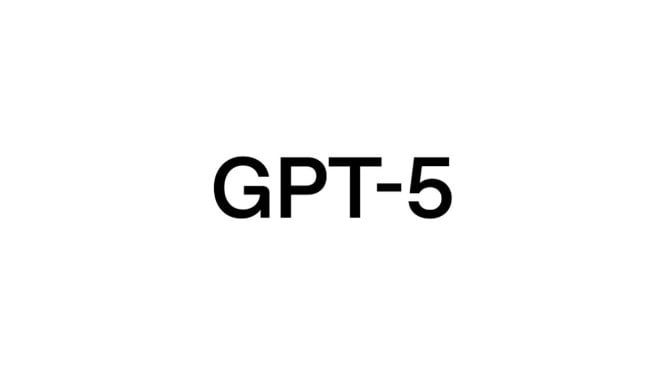
The launch of GPT-5 marks one of the most significant developments in artificial intelligence from OpenAI. It’s not just an upgrade; it’s being billed as a “unified” model that thinks more deeply, responds more quickly, and is built for real-world use across writing, coding, reasoning, and more. Below we’ll unpack what GPT-5 brings, why it matters, the challenges ahead, and what it means for users like you.
On August 7, 2025, OpenAI officially introduced GPT-5, calling it “our smartest, fastest, most useful model yet”. OpenAI+1 According to the company, GPT-5 drastically improves over previous models (like GPT-4o, GPT-4.5) by combining multiple capabilities under one roof: fast response when appropriate, deeper “thinking” when tasks demand it, and better overall performance in coding, writing, health, math, and vision. Wikipedia+1
Key features include:
A unified system architecture: GPT-5 routes requests based on the task at hand (fast vs deep reasoning). OpenAI
Significant improvements in coding: generating front-end UI, apps, games from minimal prompts. OpenAI+1
Better safety and fewer “hallucinations” (false or made-up outputs) compared to earlier versions. Wikipedia
Broad rollout: available to free, Plus, Pro, Team, Enterprise, Edu users (with usage limits and tiers) via ChatGPT and API. OpenAI+1
In short: GPT-5 isn’t just smarter—it’s designed to be more usable, accessible, and versatile.
Whether you’re writing an essay, debugging code, designing a website, or having a deeper conversation with an AI, GPT-5 promises a smoother, higher-quality experience. The upgrade means fewer frustrations, more creative possibilities, and quicker solutions.
GPT-5 is a big deal in the enterprise and developer space. With stronger reasoning, better tool-chains, and improved multimodal capabilities (text + images + maybe more), it opens up new kinds of applications: intelligent assistants, software generation, research support, domain-specific reasoning (e.g., legal, medical). For organizations using AI as part of their workflow, GPT-5 raises the bar.
The launch signals how fast foundation models are advancing. If GPT-5 delivers on its claims, it may accelerate adoption, shift expectations for what models can do, and spur competition from other players. It may also escalate questions around regulation, ethics, safety, and AI’s societal impact.
Here are the standout upgrades in GPT-5 compared to earlier models:
Deeper reasoning model + router system: GPT-5 doesn’t always go full “slow thinking” but adaptively chooses when to engage deeper reasoning based on prompt complexity. That allows faster responses when appropriate. OpenAI+1
Better code & UI generation: Users report that GPT-5 can craft aesthetic web pages, apps, games, with minimal prompting—considering design choices like spacing, typography, layout. OpenAI
Reduced hallucinations & improved reliability: According to early reports, the model makes fewer major errors across reasoning benchmarks. Wikipedia
Wide accessibility: Free users get access (with limits); paid tiers get extended usage and “Pro” versions. This democratizes high-end AI access. TechCrunch+1
Multimodal and broader domain performance: GPT-5 is not just text-only—it spans multiple modalities and domains (health, coding, math, design). Wikipedia
In effect, GPT-5 is built for “what’s next” in AI—more complex tasks, real-world workflows, broader human-AI collaboration.
Even with all the hype, GPT-5 faces real hurdles:
Expectations vs Reality: When a model is billed as “PhD-level”, expectations soar. Early users or enterprises may still find rough edges, or that it doesn’t out-perform human experts in every scenario.
Safety, bias, hallucinations: Even improved models must still grapple with false outputs, unintended biases, and misuse risks. The claim of “fewer errors” doesn’t mean perfect.
Access & cost: While many users get access, heavy usage (large enterprises, demanding workflows) may still come with higher cost or limits. Usage caps for free/plus tiers may restrict how much you can leverage the model.
Transition & compatibility: Organizations built on prior models (GPT-4o, custom fine-tuned models) may face integration or migration issues. The shift to one unified model may mean re-thinking workflows.
Ethical & regulatory oversight: As models become more powerful, questions around data privacy, automated decision-making, job impacts, AI governance become more urgent. GPT-5’s launch heightens the spotlight.
Overreliance: With stronger AI, there’s a risk that humans lean too heavily on models, reduce critical oversight, or assume outputs are flawless. Good human + AI collaboration remains essential.
If you’re a casual user: Expect better ChatGPT interactions—faster, more accurate, more helpful. You might do things you didn’t try before (e.g., prototyping websites, creating visual content, getting advanced coding help) because the barrier is lower.
If you’re a creator or developer: GPT-5 gives you more power. You might prototype faster, explore generative design, implement AI-powered workflows, or embed advanced reasoning into apps. It’s a tool that expands possibilities.
If you’re in business/enterprise: GPT-5 can drive productivity, automation, decision support, creativity. But you’ll need to evaluate cost, integration, training, oversight. It could be a strategic AI advantage.
If you’re a policymaker or ethicist: This launch is a marker. It’s time to think about how society manages powerful AI: Who controls it? How is bias managed? What are the impacts on work and society?
For everyone: The broader implication is that AI is creeping into more tasks and domains. Learning how to work with AI (rather than just use it) will grow more valuable.
The GPT-5 launch is a landmark moment: smarter, faster, more useful AI is here.
It matters across user levels—from everyday chats to enterprise workflows and advanced developers.
Despite advancements, challenges remain—expectations, safety, cost, integration.
The future isn’t just “better AI” but “better human-AI collaboration”—how you harness it matters.
If you’ve been holding back on leveraging AI because it felt too rough or unreliable—GPT-5 may change that calculus.
With GPT-5, OpenAI has moved the needle. Whether you’re excited, cautious, or somewhere in between—this launch matters. For tech, business, education, creativity—it’s a tool that empowers, but doesn’t replace the need for insight, judgment, and human values.